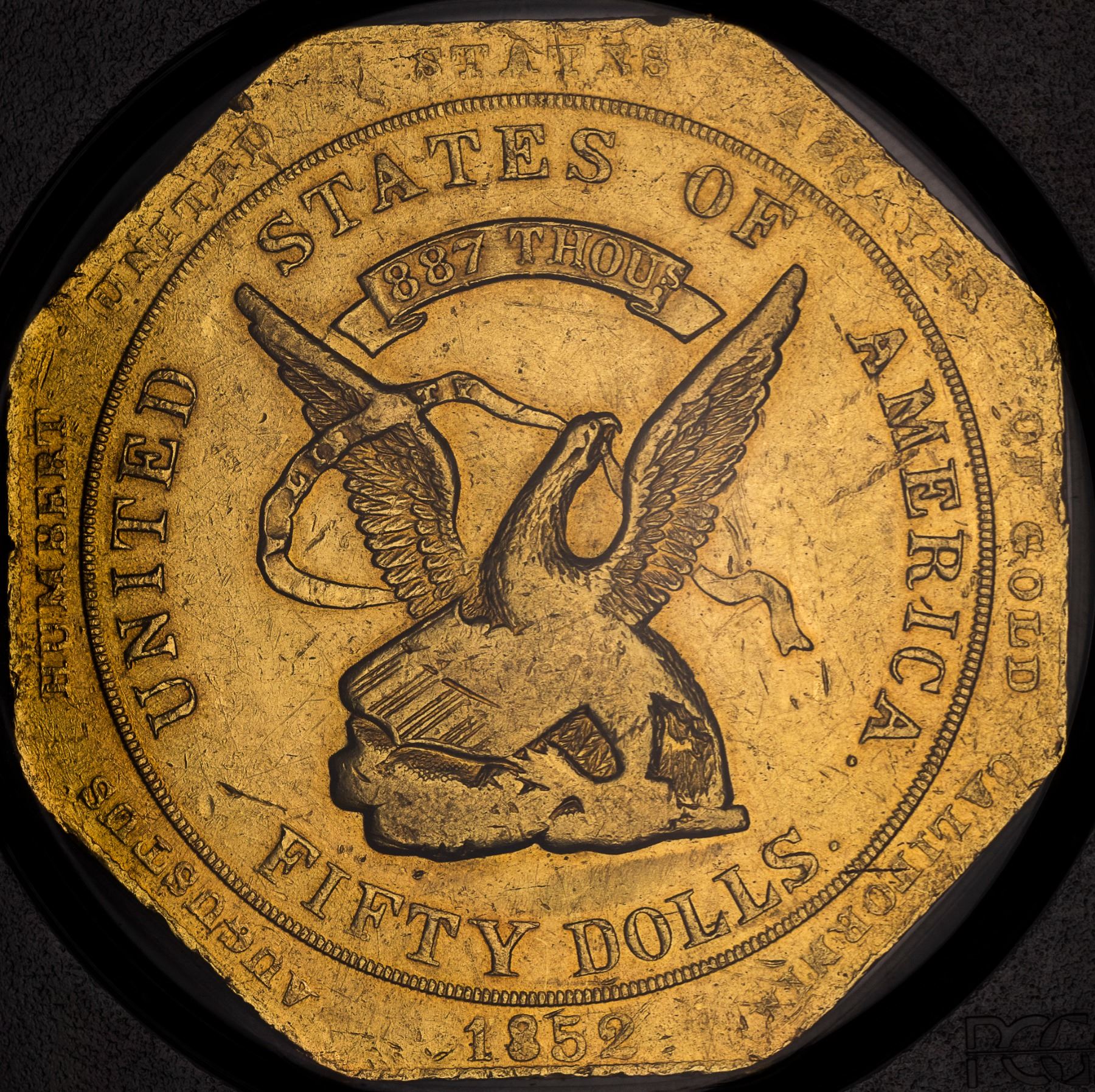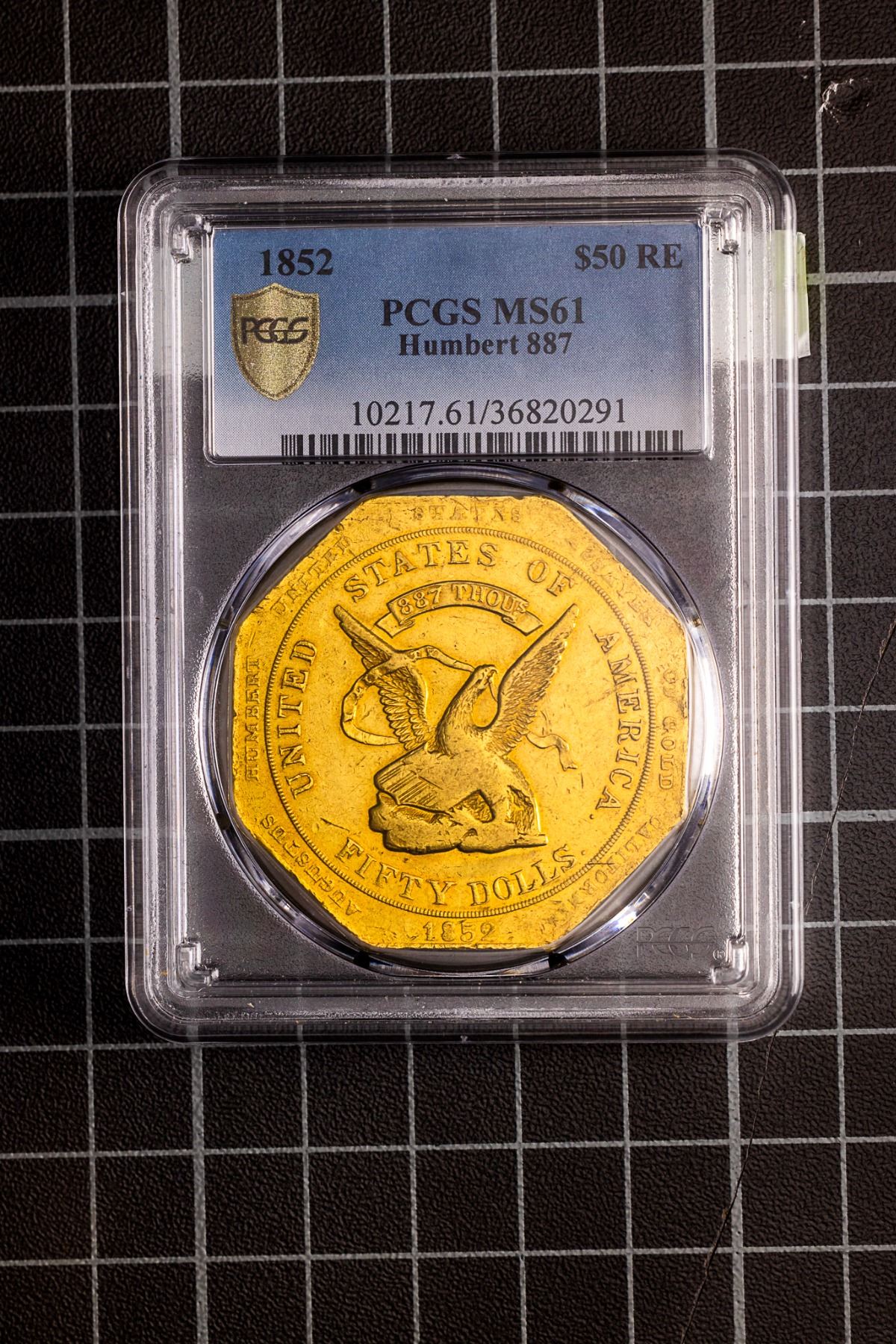Lot 7
SOLD
222,000.00USD+ buyer's premium + applicable fees & taxes.
222,000.00USD+ buyer's premium + applicable fees & taxes.
This item SOLD at 2022 Sep 30 @ 18:31UTC-7 : PDT/MST
Item Description
Wow wow wow! This Humbert slug is incredible, how this slug only graded at MS61 is mind boggling to me, for me personally there are only two distracting marks on this slug, under “M” in America on the right obverse and above the “F” in fifty on the lower left obverse field. Compared to the MS63 in my opinion this example is nicer. Usually when inspecting $50 you will notice lots of rim dings and indents such as on the MS63 example whereas on the current example rim dings are minimal but of course still present. There is some rubbing on the eagle, but nothing unexpected. The reverse on this slug is just incredible, the detail on the reverse is so intricate, in most examples this area would be worn down or rubbed out. In this example the reverse design is fully legible and even where the design gets the smallest it is still legible. Here is your chance to own one of the nicest slugs to date.
Heritage auctions on the history of these slugs: Few issues are as evocative of the romantic gold Rush era as the massive fifty dollar slugs produced by Moffat & Company in the early 1850s. The scarce K-11 fifties were struck in the first few months of 1852, shortly before John Little Moffat retired to return to the gold fields. Moffat & Company held the government contract to produce gold coinage in California and the fifty-dollar slugs were very useful for settling large transactions in the economy of the region, where paper money did not circulate. Of course, they were less useful for smaller day-to-day transactions. The company was reorganized after Moffat left as the U.S. Assay Office of Gold, and the government contract was continued. Moffat's partners, Curtis, Perry, and Ward, continued in their managerial roles and Augustus Humbert continued as assayer. Many of the K-11 fifty-dollar pieces were melted and reissued under the auspices of the new company, making the issue quite scarce today.
Heritage auctions on the history of these slugs: Few issues are as evocative of the romantic gold Rush era as the massive fifty dollar slugs produced by Moffat & Company in the early 1850s. The scarce K-11 fifties were struck in the first few months of 1852, shortly before John Little Moffat retired to return to the gold fields. Moffat & Company held the government contract to produce gold coinage in California and the fifty-dollar slugs were very useful for settling large transactions in the economy of the region, where paper money did not circulate. Of course, they were less useful for smaller day-to-day transactions. The company was reorganized after Moffat left as the U.S. Assay Office of Gold, and the government contract was continued. Moffat's partners, Curtis, Perry, and Ward, continued in their managerial roles and Augustus Humbert continued as assayer. Many of the K-11 fifty-dollar pieces were melted and reissued under the auspices of the new company, making the issue quite scarce today.




